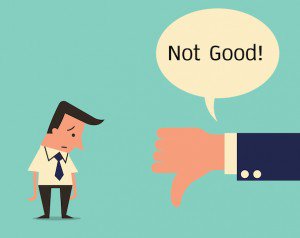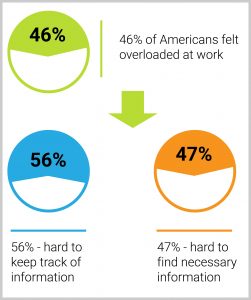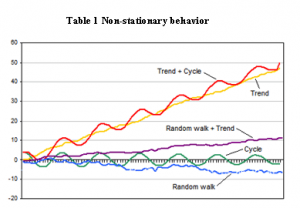In the split second it took for you to read the start of this sentence, Google’s algorithms have handled over 40,000 queries. By the end of the day, the engine will have processed over 3.5 billion searches.
At their core, landing pages are built to capture and direct as much of this massive digital exploration as possible. So what does it take to shepherd some of this traffic your way?
A unique selling proposition, benefit statements, a hero shot, perhaps some social proof, and your call-to-action (CTA). Easy enough right?
Landing pages are made up of only a handful of essential components that drive just one business objective.
However, to mistake their lack of intricacies as evidence of simplicity would be a critical error. Whether that objective is to generate a lead, ecommerce transaction, or another activity, it’s essential that you connect with your consumer.
The limited number of components only stresses the important role each plays in achieving the landing page’s ultimate goal. You only have so much content above and below the fold to speak to your target consumer in an authentic way that will inspire the all important button click on your call to action.
Follow these 4 steps to landing page domination and watch your conversion rate skyrocket.
#1 Understand the Why
If you’re a junior designer, you may currently feel detached from the strategic thinking getting passed down from your account or creative directors.
Impress your creative director by asking why?
Why does the product or service exist? What does it provide? Why would someone want to engage with it?
These why? questions unlock a narrative and begin the process of brand storytelling.
A designer armed with the knowledge of a brand’s singular purpose is a designer that’ll make better design decisions.
Simon Sinek coined this why focused approach “the golden circle” in his book Start with Why. I love to adopt the golden circle to marketing and believe it demonstrates important lessons in providing true value to your consumer’s experience.
Useful Links:
- Start with Why
- Kurt Vonnegut on the Shapes of Stories – Watch the sci-fi literary master break down the shapes of stories we know and love to inform how you frame your brand’s narrative.
#2: Understand the Audience
Now that you’ve asked why?, it’s time to figure out who?
Personas and user stories are two tools that can be used to better understand your audience and how to meet their needs.
A persona is an archetype of a person within your target audience.
Say for example that your landing page prompts the purchase of a fitness drink that provides high calorie nutrition necessary for post-workout recovery. You name your persona “Frank” and decide that Frank is thinly built and has been struggling to build muscle his entire life. By creating this archetype, you begin to understand the deeper motivations that will affect whether Frank clicks your call-to-action (CTA) button or not. Your copy and images need to offer clear benefits, not features, that will help Frank achieve his fitness goals.
A user story takes your persona to the next level by addressing the specific behaviors the user is likely to take and how your content will directly provide value resulting from these behaviors.
The story typically starts with the idea: “As a (insert persona of user), I want _____ to happen because of _____. “
Ask yourself, what will our persona Frank want to do once he has arrived on the landing page? If he clicks X, what will happen next that will further the brand consumer conversation? What mistakes is Frank likely to make? How can we minimize them?
User stories demand that you consider not just how the landing page looks, but how it works for your target audience.
Useful links:
- Personas: The Art and Science of Understanding The Person Behind The Visit – Moz’s IPullRank breaks down the basics
- Make my Persona – A tool for making personas from Hubspot
- Seven Companies that Understand their Buyers Personas
- How to Identify Your Online Target Audience
Now that you’ve identified the personas and user stories that represents your target audience, leverage analytic tools to discover their trends and behavior.
Modern marketers that are still operating blind to data are failing to take advantage of the single most valuable asset available to them. Don’t just collect data, draw lessons from it that will be utilized in all campaign collateral, including (you guessed it) landing pages.
If data shows that “Frank” engages heavily with fitness brands on social media, you better be driving traffic to your landing page from tweets and in your social media editorial calendar.
From a design perspective, this lets you know that the landing page must be responsive. If the majority of the traffic to your page is coming from social media, chances are people are getting there from their mobile phones. Ensure the CTA button is optimized for mobile to reduce friction.
In fact, creating a separate landing page for each inbound channel can be critical to ensure design choices match the preferences of each channel’s users.
Focus on the behaviors of your users, not your competitor’s’ pages, to design a landing page that will connect with your target audience.
Useful Links:
- Value Proposition Design – the second book from Strategyzer features some great tools for not only coming up with user hypotheses, but how to test and validate them. The linked page also serves as an example of effective landing page design.
- Lean UX Book – a guide to incorporating user experience into agile software development. Valuable lessons for the design and development of landing pages.
- The Unbounce Guide to Landing Page Analytics
#3: Understand the Interaction
The next step to landing page wins is to understand how your user will interact with the landing page by leveraging mapping and tracking tools.
A journey map plots the user experience at each touchpoint from their first brand exposure to the ultimate point of purchase or engagement.

(An example of Journey Mapping with my team at Digital Surgeons)
No longer are consumers ushered down the traditional sales funnel, an unlimited number of digital and social media channels allow for a complex push and pull between brands and consumers spread across an infinite amount of interactions.
When designing a landing page, it’s critical that you understand where your user currently lies on their brand journey.
87% of people on Pinterest have made a purchase based on something they found in the app. If traffic to the landing page is driven by a promoted pin, understand your consumer is most likely far along and motivated to buy.
Tracking tools inform your design a step further by finding out how visitors actually engage with a landing page.
Google Analytics is the industry tracking standard, and for a good reason. The number of visitors, average time spent on site, percentage of new visitors, and your bounce rate are all easily collected using Analytics. A high bounce rate indicates that visitors to your page are leaving it almost immediately after landing on it.
If your page has a high bounce rate, reconsider whether your design is functional, offers clear solutions and a call to action, and is relevant to the keywords directing traffic to it.
Data-phobic? Use visual tracking tools like heat maps to avoid those pesky numbers.

(a Crazy Egg heat map)
The more clicks, the “hotter” the area of the page appears. In the above WordPress example, the login information is the most engaged part of the page. Heat maps can also show how far people scroll down your page.
While heat maps offer valuable insight for any web page, they are an almost essential part of a landing page designer’s “toolbox.” Heat maps let you know whether your users are interacting with the site in a manner that supports the singular focus of the landing page. For example, if nobody is scrolling down, your CTA better be above the fold. If your users are getting caught in the weeds, simplify your design to keep them on track.
Useful Links:
- All You Need to Know about Customer Journey Mapping
- How to use Crazy Egg Heatmaps
- Kissmetrics’ 50 Resources for Getting The Most Out of Google Analytics
#4: Optimize the Experience
3.5 billion daily Google searches. There’s an entire planet of consumers out there desperately searching for something. Think about how easy we have it as modern marketers – sure, we are fighting goldfish attention spans and an infinite amount of competing content – but our target market is looking for us and there is less friction than ever for us to show we have the answers.
A truly optimized landing page matched to a specific consumer need will provide them just what they are looking for.
Optimize the components of your landing page with conversion centered design and thorough testing to drive your brand’s goals and meet your consumer’s needs.
Be sure your brand voice is consistent from the advertisement that links to the page with the landing page itself. Message match your headline and proposition to avoid turning off consumers with a “bait and switch.”
Useful Links:
- The Ultimate Guide to Conversion Centered Design
- Creating powerful experiences
- How to craft your own brand voice toolkit
- A great guide and example of voice and tone by Mailchimp
I love the intersection of how great narratives can create value for consumers and the brands respectively.
(210)







